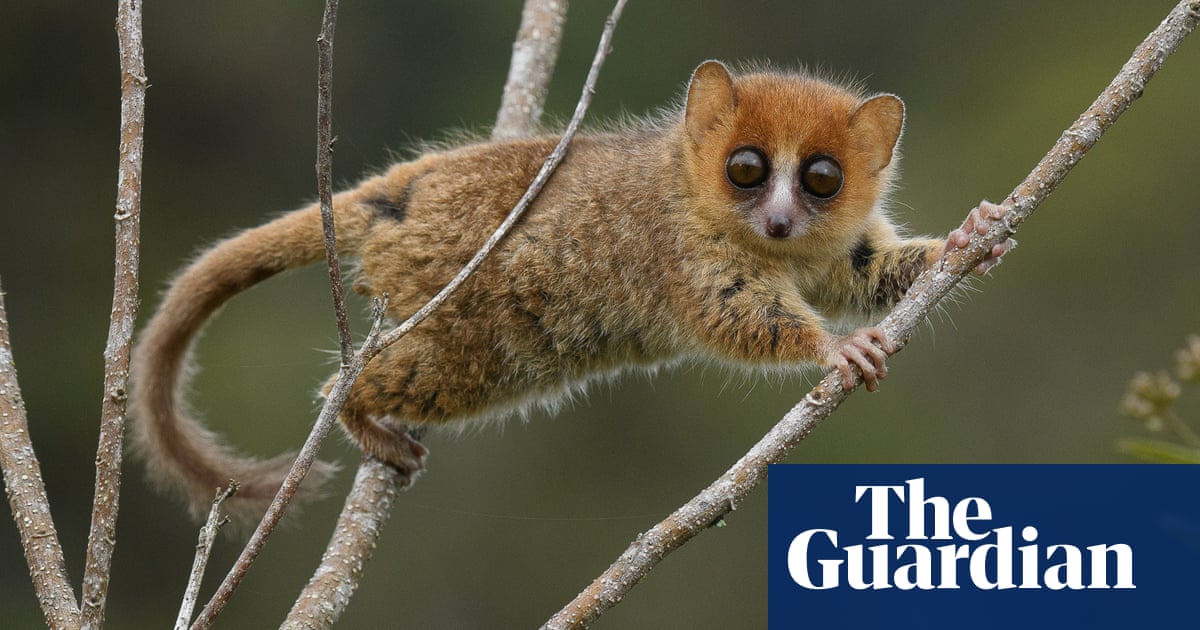
The mystery of a bizarre creature dubbed the “alien goldfish”, which has baffled fossil experts for decades, may have been solved, according to scientists who say the animal appears to have been some sort of mollusc.
Typhloesus wellsi lived about 330m years ago and was discovered in the Bear Gulch Limestone fossil site in Montana in the late 1960s, with the remains of other species subsequently identified.
But with features including a rugby ball-shaped body up to 90mm (3.5in) in length, a fin on its back end, neither backbone nor anus, and lacking a shell, the anatomy of Typhloesus left scientists confused as to where it belonged on the tree of life.
The discovery of tiny teeth within Typhloesus fossils that eventually turned out to be the remains of a last meal of tiny, eel-shaped, extinct fish known as conodonts, had added to the confusion.
Dr Jean-Bernard Caron, a co-author of the research from the Royal Ontario Museum, said: “[Typhloesus] was sort of an orphan in the tree of life.”
But the researchers say a toothy structure found in the animals’ gut may help clear up the confusion.
Caron said: “What we think is that [Typhloesus] might be some sort of unique group of molluscs that evolved during the carboniferous [period] and eventually went extinct.”
Writing in the journal Biology Letters, Caron and his colleague Prof Simon Conway Morris, from the University of Cambridge, describe how they studied about a dozen specimens of Typhloesus housed in the Royal Ontario Museum, many of which had not been studied before.
In the centre of several of the specimens, they found evidence of a feeding apparatus akin to the toothed ribbon – radula – seen in molluscs today. Located in the foregut of Typhloesus, the 4mm-long structure is comprised of two rows of about 20 triangular teeth, curved backwards.
The researchers say it is likely Typhloesus turned the structure inside out, projecting it beyond the body to capture prey.
“An analogy here [is] the tongue of a lizard, for example, capturing an insect. It is very quick and it brings food inside the mouth,” said Caron, adding that as well as consuming conodonts, it is possible Typhloesus ate algae from the sea floor.
But Caron said the case is not completely closed. “We know it is a sort of a mollusc, but it is still a very strange-looking mollusc,” he said, adding that it is unlikely everyone will agree with the team’s interpretation that the creature may have been a type of gastropod – a family that includes snails and slugs.
Dr Luke Parry, a palaeontologist at the University of Oxford, who was not involved in the work, welcomed the study.
“The radula they have identified looks compelling to me, so this [is] effectively a paleontological mystery solved even if the authors can’t place the fossil with much precision in the gastropod tree of life,” he said.
Prof Mark Purnell, from the Centre for Palaeobiology at the University of Leicester, said that while the radula is convincing, it remains unclear whether Typhloesus was a mollusc, given that different types of animal have independently evolved radula-like features.
“It is still a very strange animal,” he said. “[The researchers] have found some tantalising new information, but it is far from being a slam-dunk case in terms of definitely knowing what this weird thing is.”












